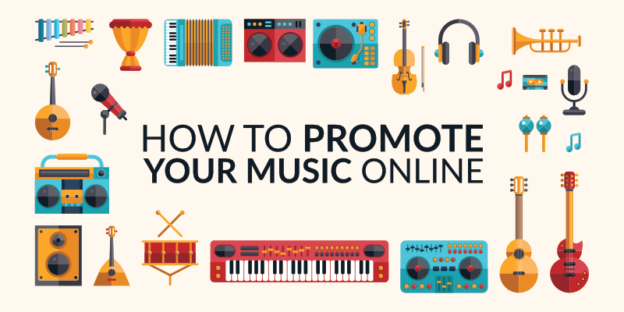Exploring A Good Choice of Free Music Editor: For Your Creative Projects
/ by hqt
Music editors offer an excellent avenue for enhancing your creative projects, granting you the ability to produce music that rivals professional compositions. The beauty lies in the fact that you need not invest extensive time in learning to play instruments or mastering music theory.
Moreover, these versatile tools find utility in crafting tailor-made soundtracks for your videos, games, or any other creative endeavors. They empower you to fashion a sonic landscape that is entirely distinct, setting your work apart from the creations of others.
Free music editors are particularly valuable for those seeking cost-effective solutions without compromising on quality. They open the door to crafting original songs and soundtracks for your projects, whether they be videos, games, or other multimedia ventures.

A robust free music editor equips you with a suite of powerful features. You can seamlessly integrate effects, capture audio from your computer’s microphone or external devices, and fine-tune the pitch of your recordings. Furthermore, these editors often come with built-in synthesizers, facilitating the creation of entirely new sounds from scratch or the fusion of existing ones in innovative ways.
Understanding Music Editors
Defining Music Editors
A music editor refers to software designed for the manipulation and mixing of audio files. These applications typically offer a comprehensive set of tools and functions aimed at altering and enhancing audio content.
Key Attributes of an Effective Music Editor
In the realm of music editors, not all offerings are created equal. A high-quality music editor can significantly simplify your work process and enhance the quality of your outcomes. However, it’s essential to exercise caution when selecting a program. Here are pivotal characteristics to consider in a music editor:
1) Sound Quality: This ranks as the most critical factor as it directly impacts the ultimate sound of your project. The format of the audio file is paramount, so ensure the editor supports your required format. Additionally, scrutinize technical aspects like bit rate, sample rate, and frequency response.
2) User-Friendliness: The user interface should be intuitive and straightforward, minimizing the time spent grappling with the software’s mechanics. Look for editors with clear documentation and assess whether they cater to both newcomers and experienced users. An active online community sharing tips can expedite the learning process.
3) Feature Set: Music editors boast a plethora of features. Therefore, it’s vital to confirm that the chosen editor aligns with your specific needs before committing to it.
Significance of Choosing the Right Music Editor
Music plays a pivotal role in enhancing any form of visual content. It has the ability to set the tone, evoke emotions, and amplify the impact of your message.
Opting for the best free music editor can aid you in discovering the ideal musical accompaniment for your project. Free music editors serve as a fantastic entry point for your editing endeavors. They offer user-friendly interfaces, a rich array of features, and, most importantly, they come at no cost.
Criteria for Choosing Free Music Editors
1. User-Friendliness and Interface
To maximize the utility of your music editing software, it should be designed with user-friendliness in mind and feature an intuitive interface. Consider how easily you can navigate and use the software, especially if you lack extensive experience in audio production.
The best free music editors are those that offer both simplicity and a short learning curve. They should present tools in an intuitive layout, ensuring that you can readily access the necessary features when needed. Additionally, a diverse selection of effects, synthesizers, and other tools should be available for you to experiment with various soundscapes.
2. Audio File Format Compatibility
While most programs support commonly used formats like MP3 and WAV, some go beyond by accommodating additional audio file types such as FLAC, OGG, and M4A. You can typically find information about supported formats on the program’s website or within its documentation.
3. Editing Capabilities and Toolset
Evaluate the program’s capacity for music track editing, as well as its support for audio file formats like WAV, MP3, and OGG.
4. In-Built Effects and Plugins
Learning to use professional-level software can be time-consuming. If simplicity is your goal, opt for an editor with a user-friendly interface. The finest free music editors offer a diverse range of in-built effects and plugins that can elevate your compositions effortlessly.
5. Export and Sharing Options
When crafting your music, the ability to share it with others is paramount. The best free music editors provide multiple export formats, ensuring compatibility with various devices. This flexibility allows you to listen to your creations wherever you choose.
Creating music often involves borrowing elements from existing compositions and incorporating them into new ones. This is why top-tier free music editors often include built-in sample libraries, enabling you to import sounds from diverse sources such as YouTube videos or other artists’ albums.

A Good Choice of Free Music Editor: SoundLab Audio Editor
Aout us
SoundLab Audio Editor is a free, open source audio editing software that comes with a simple interface and with all the basic features you need to edit your audio files. You can use SoundLab Audio Editor to record and import audio files, edit them, apply effects and then export the final result as an MP3 or WAV file.
What We Can Do For Your Music Production?
This professional audio editor offers 16 tracks, and over 20 audio effects, supports lossless output formats, and features an intuitive waveform display with seamless zoom capabilities.
Utilizing machine learning, it can efficiently separate human voice from accompaniment, making it a valuable tool for voice recording noise reduction.
Additionally, it provides high-fidelity audio recording, enabling simultaneous playback and recording with In-Ear Monitor support. You can connect an external microphone and take advantage of features like a Limiter (anti-pop) and Reverb input filter.
Our Speciality
We’ve introduced over 20 audio effects, and you can apply these effects to specific sections of a track, rather than the entire track.
Our software supports up to 16 audio tracks and offers a range of commands, including copy, cut, paste, split, trim, replace, and duplicate, to enhance your editing experience.
Tips for Effective Music Editing with a Free Application
– Organizing Your Audio Files
The initial step toward effective music editing entails meticulous organization of your audio files. This practice ensures that your files remain easily accessible whenever you require them.
– Efficient Utilization of Editing Tools
Optimal music editing involves leveraging the full spectrum of available tools at your disposal. For instance, when altering a song’s tempo or introducing panning effects, harness these tools in synergy rather than relying on one or two effects in isolation. This holistic approach contributes to a more refined and professional audio result.
– Incorporating Effects and Enhancements
Leverage the application’s in-built effects to add an extra layer of finesse to your music. Some notable examples include:
1) Echo: This effect generates a repetitive echo that gradually diminishes over time, offering depth to your track or creating striking transitional effects.
2) Gates: Gates are valuable for crafting stutters, drops, and other effects, precisely timed to specific audio segments.
3) Loops: Loops empower you to repeat a chosen audio segment until you decide to conclude it or until the track’s end. They excel in building anticipation before pivotal moments in your composition.
– Exporting and Sharing Your Music
Upon completing your editing process, the next step involves exporting your musical creation and sharing it with a wider audience. Commence by exporting the audio file from your editing software. Subsequently, you can upload this file to various platforms such as YouTube or SoundCloud, enabling people to listen to and download your work free of charge.
If you prefer not to share your music online but seek practice in editing, consider recording your performance of an original composition or even practicing your vocals alongside an existing recording. Then, you can edit this recording into something entirely new. This approach offers valuable experience with editing software before working with songs from other artists’ recordings.
CONCLUSION
As you set out on your creative endeavors, whether they involve composing music, editing audio recordings, or venturing into the realm of sound experimentation, SoundLab Audio Editor stands as your indispensable resource. Its capability to sculpt, manipulate, and refine audio with meticulous precision unfurls a realm of boundless artistic expression.
Throughout your creative odyssey, remember to traverse uncharted territories, experiment boldly, and challenge the limits of what SoundLab Audio Editor can achieve. The vast domain of music and audio eagerly anticipates the resonance of your unique artistic voice, and this complimentary music editor is your faithful companion, poised to assist you in making your indelible mark. So, allow your creativity to take flight, and may your projects resound with the world’s admiration.